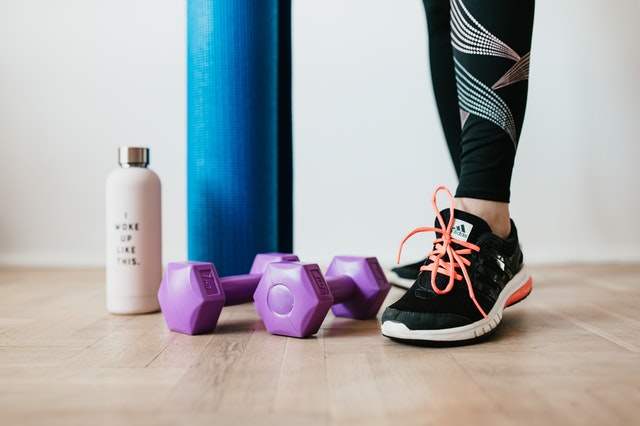Making the Most of Your Home Workstation
It’s essential to periodically review your home workstation and ensure you’re set up for success moving into the new year. Since you spend several hours at your workspace, it should support your work responsibilities and be arranged in a way that helps you avoid injuries. This article discusses the importance of ergonomics and home workstation best practices.
Ergonomics Still Matter
Ergonomics is the science of fitting a workspace to your needs and aims to increase efficiency while reducing discomfort and the likelihood of injury. With more people working from home and other remote locations, ergonomics remain critical to the workday. And fortunately, you’re more in control of workspace ergonomics in your own home versus an office.
Poor workstation ergonomics can lead to reduced productivity and several musculoskeletal disorders (MSDs) that may have long-lasting effects, such as head or neck strain and damage to muscles, nerves, blood vessels, ligaments and tendons.
While completing a nonergonomic motion may feel natural or safe for the short term, repetitive or prolonged use of an unhealthy body movement can lead to long-term injuries and strains.
Remote Workstation Review
Risk factors for work-related MSDs include awkward postures, repetition and inadequate lighting. General ergonomics best practices can help you avoid these risks. Review your home workstation setup to ensure it’s still promoting a health workday:
- Chair – Chairs should support your spine’s curvature and adjust so your feet can rest flat on the floor and your thighs are parallel to it. If the chair is too high, consider using a footrest or household object.
- Desk – Your work surface should have space underneath for your legs and feet without your knees banging on the bottom. If it’s too low, adjust your chair or work surface accordingly.
- Monitor – Arrange your laptop or monitor(s) directly in front of you and about an arm’s length away. The top of the screen(s) should be at or slightly below eye level.
- Keyboard and mouse – When using a keyboard and mouse, keep them on the same surface. Ideally, a flat keyboard is better than a tilted one. Position your arms so that your wrists can be straight with your arms at elbow level.
- Phone – If you’re spending much time on phone calls or in meetings, a headset or speakerphone can reduce the need to frequently hold up the phone or press it up against your neck.
- Lighting – A mix of natural and artificial light can reduce the risk of eye strain and headaches. Glare can also strain your eyes, so position the monitor in a way that reduces or eliminates glare.
- File storage – Organize your files and materials so you’re not frequently bending and straining to access them.
As you find yourself working from home for a prolonged time, taking small steps can go a long way toward working more productively and preventing ergonomic injuries. Keep ergonomics in mind and make your workstation work for you.
Staying Active at Home
Some people can develop an unhealthy, sedentary lifestyle when working and living at home. It may be easy to forget about exercise when you’re home all day. The good news is you’re in control of keeping yourself active while also getting your work done. It comes down to building healthy habits for your workday and weekend.
Regular physical activity is vital for your health. There are numerous health benefits of physical activity. Most significantly, it can help maintain your weight and reduce your risk for high blood pressure, Type 2 diabetes, heart attack and stroke.
The Department of Health and Human Services recommends that most adults get at least 150 minutes of moderate physical activity each week, such as brisk walking or light housework. Additionally, it’s recommended to do muscle-strengthening activities two or more days per week that target major muscle groups (legs, hips, back, abdomen, chest, shoulders and arms).
Consider these strategies for staying active at home:
- Try a fake commute. A fake commute involves using a typical commute time period to transition and mentally set yourself up before working. Without a standard commute, you could exercise before or after your workday.
- Schedule your workout. If a fake commute doesn’t fit with your remote work schedule, find ways to plan your exercise and stick to it. Building exercise into your daily planner can help you stay on track. If something comes up and you have to change a fitness appointment, reschedule it right away.
- Move every hour. It’s important not to be sedentary for long periods of time. Set a timer or use apps that remind you to stand up and move for a few minutes. Use that movement to grab a healthy snack, refill your water cup, or walk up and down the stairs.
- Designate a workout spot. Find a room or corner in your home to be your workout space. You don’t need that much space for an efficient workout, just enough to move around a bit or lay down an exercise mat.
- Keep it simple. If you already have hand weights, a yoga mat or exercise bands at home – great! If not, get creative with body-weight exercises, or consider using household items to add resistance to your routines.
Consistency is key with any fitness routine. Staying active at home makes you more likely to adopt fitness habits and live a healthy lifestyle.
